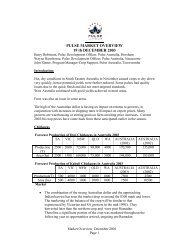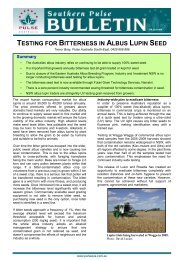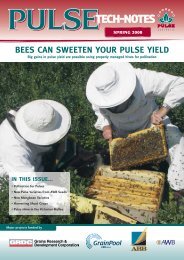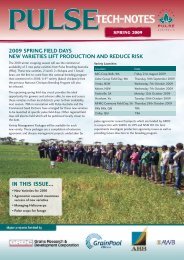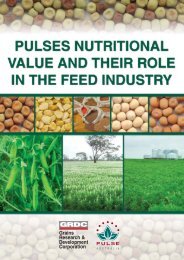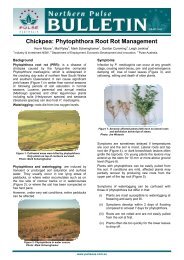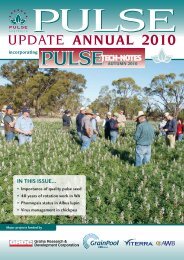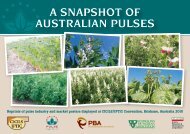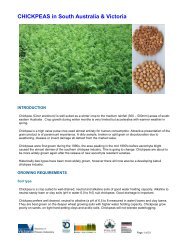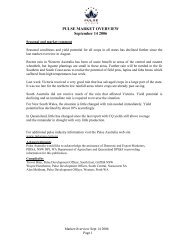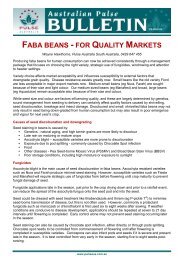Australian Grain Industry Code of Practice - Pulse Australia
Australian Grain Industry Code of Practice - Pulse Australia
Australian Grain Industry Code of Practice - Pulse Australia
You also want an ePaper? Increase the reach of your titles
YUMPU automatically turns print PDFs into web optimized ePapers that Google loves.
The key elements <strong>of</strong> this system are (refer to Appendix 1 for<br />
further details):<br />
Chemical Registration – Chemicals are registered for both<br />
pre-harvest and post-harvest use on grain. In <strong>Australia</strong> there<br />
are two Government bodies responsible for registration <strong>of</strong><br />
chemicals and for determining maximum residue limits <strong>of</strong><br />
chemicals. <strong><strong>Australia</strong>n</strong> MRLs are generally either the same as,<br />
or more stringent than, those prescribed by the international<br />
<strong>Code</strong>x Alimentarius Commission.<br />
<strong>Australia</strong> is a full signatory to the World Health Organisation’s<br />
<strong>Code</strong>x Alimentarius Commission recommendations with<br />
respect to pre and post harvest grain protectant chemicals.<br />
The <strong><strong>Australia</strong>n</strong> recommendations on the registration and use <strong>of</strong><br />
chemicals, which reflect these <strong>Code</strong>x Standards, are binding in<br />
all <strong><strong>Australia</strong>n</strong> States. To access the <strong><strong>Australia</strong>n</strong> MRL database<br />
go to: www.apvma.gov.au/residues/mrl.shtml and the Food<br />
Standards <strong>Australia</strong> New Zealand (FSANZ) website address is:<br />
www.foodstandards.gov.au<br />
Chemical Usage and Monitoring – The <strong><strong>Australia</strong>n</strong> National<br />
Residue Survey (NRS) gathers information on chemical<br />
residues and environmental contaminants in the products <strong>of</strong><br />
participating industries, such as crops, meat and grain. The<br />
NRS results show <strong><strong>Australia</strong>n</strong> grain is <strong>of</strong> a high quality with<br />
respect to residues and contaminants. Information about the<br />
NRS is located: www.daff.gov.au/nrs<br />
Export <strong>Grain</strong> Regulations – The <strong><strong>Australia</strong>n</strong> Government<br />
Department <strong>of</strong> Agriculture, Fisheries and Forestry (DAFF)<br />
controls exports under the Export Control Act 1982. The<br />
<strong><strong>Australia</strong>n</strong> Quarantine and Inspection Service (AQIS) is part <strong>of</strong><br />
DAFF and is responsible for this task.<br />
AQIS interfaces with the grain industry through the AQIS<br />
<strong>Grain</strong>s <strong>Industry</strong> Consultative Committee (AGICC). AGICC is the<br />
principal advisory forum for AQIS to consult with the grain and<br />
related industries on export certification, export market access,<br />
quarantine and other relevant issues. Accordingly, the AQIS<br />
<strong>Grain</strong> and Plant Products Export Program only introduces major<br />
policy or operational changes after AGICC has been consulted.<br />
<strong>Industry</strong> quality systems – Across the <strong><strong>Australia</strong>n</strong> grain supply<br />
chain from on-farm production to export in bulk vessels or<br />
containers, there are a range <strong>of</strong> systems and controls in<br />
place in order for all exports to meet the importing country<br />
quarantine regulations, quality requirements, chemical residue<br />
limits and other standards as necessary. <strong>Industry</strong> developed<br />
quality control checks are carried out from the time grain is<br />
<strong><strong>Australia</strong>n</strong> <strong>Grain</strong> <strong>Industry</strong> <strong>Code</strong> <strong>of</strong> Conduct 13



